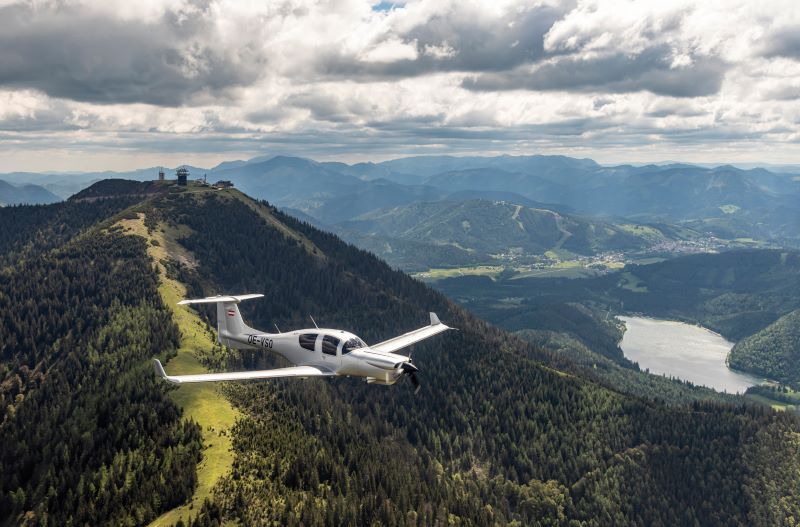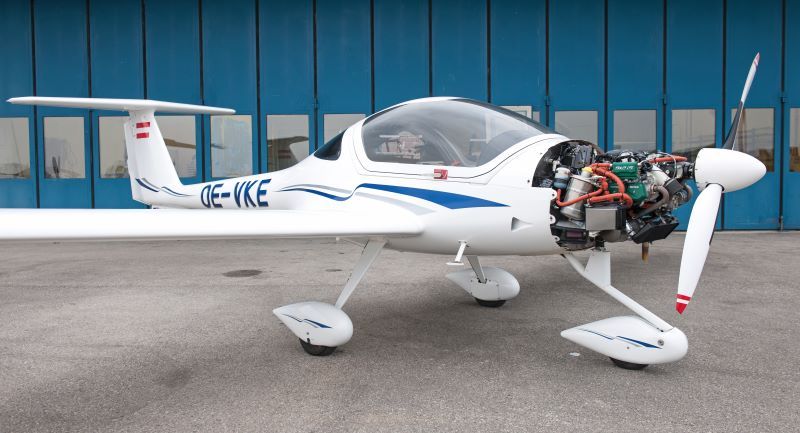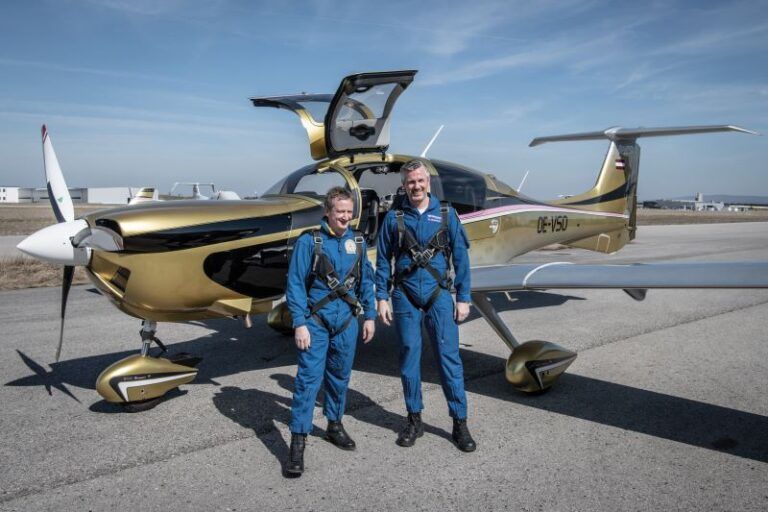Q: What were your first steps into aviation?
I started as a glider pilot when I was 13 years old. My father was a private pilot and that is where most of my enthusiasm for aviation has come from.
Q: How did you get into flight testing?
Initially, I did not plan to have an aviation career. I trained as a dentist, but after my studies I was unsure it was for me. So, I did my ATP [Airline Transport Pilot] theory while working as a dentist. I had enough flying hours already from flying as a private pilot.
My break into flight test happened while I was doing an IFR module – learning to fly using instrumental guidance. On the same course was Mr Thielert, who at that time was developing the first modern automotive diesel engine for use in aviation.
He suggested that instead of just sitting in a cockpit flying from A to B and getting bored, I could join his team and that he would send me to test pilot school. I joined his company in 2003 and went to test pilot school in 2004. Thielert Aircraft Engines, which was later taken over by Continental, became the biggest supplier to Diamond Aircraft. Through that connection, I got to know its owners at the time the Dries family and joined Diamond in 2005.

Q: Why did you choose the job at Diamond Aircraft?
We would do STCs at Thielert Aircraft Engines. What attracted me to Diamond was the opportunity to flight test an entire aircraft. Flight test is a completely different job when you are developing a whole aircraft – you must consider the whole product.
Q: What were the first projects you were involved in?
My first project was finishing the icing flights on the DA42. It was of real importance because it was the type of job you would never do at an engine manufacturer. Then I was involved in the new engine certification for the DA40 and DA42.
Then there was a change on the Thielert engine – we went from the 1.7 litre core to the two litre, which needed certification. The first major projects I worked on were the DA40 NG and DA42 NG, new-engine variants that use the AE300 made by Austro Engine.
Q: What do you like best about flight testing?
When you go to the edges of the envelope, and you do not know what the aircraft will do there is a real wow effect. It is not dangerous because the risks are managed, but it is up to the flight test team how far you push it.
What’s really enjoyable is when we tackle development problems. You have many engineers telling you the envelope and the goal. And then you come back and say, “Oh, guys, your baby’s ugly, it’s just not working right”. And they say, “Oh, what do you suggest we do?” And you have to come up with design changes, suggestions and revisions to the envelope.
Seeing those changes put into action and flying around in the final products is very personally satisfying, to know you have been part of the design and development is a
great feeling.

Q: What is your approach to managing risk?
We do a lot of risk analysis and always aim to mitigate risk as much as possible. It is a big part of our job, especially when it comes to critical testing of things like spinning and flutter characteristics.
We put a lot of back doors in, redundancy, backup systems, and even ejection seats on some projects. We always ensure we have the equipment needed to cope with the worst case scenario.
Q: Has the way you work changed much over the last 20 years?
Not much has changed fundamentally because we were pretty much using leading processes and technology in 2005, the same as now. For example, we could use the FADEC data from the engines at that time already.
When we implemented the Garmin avionics into our products that was different. The full digital autopilot system was not available on the DA40 and the DA42 when the aircraft were first developed, so when we tested it we worked closely with Garmin, who came to our site and mapped the autopilot. That was a different way of working to what we had done before.
Q: Is there a lot of pressure to be more efficient?
In the end, everyone’s aim at the company is to sell aircraft. We must finish projects. So, yes there is pressure. But one of my main jobs is to protect the employees in my department from pressure as much as possible so they can do their jobs correctly.
Q: To what would you attribute Diamond Aircraft’s success?
In the beginning, we had a real advantage with the diesel engines, which run on Jet-A and are cheaper than Avgas. But what has helped most recently is our global approach to sales. We are selling the aircraft all over the world now, from Africa to North America.
Q: How important to Diamond Aircraft is flight testing?
It is the most important part! But I may be biased… it is the most important at least it is until an aircraft is certified, at which time production kicks in and becomes the most important.
In aviation, sales are driven by the quality of the product. It’s not like cars, where you can just keep adding features. How an aircraft flies and performs, how it will pay off are the most important aspects for success. Flight testing is key to developing and proving those things.

Q: What do you see as Diamond Aircraft’s best achievement?
The biggest achievement of Diamond Aircraft has been the DA42. We put a lot of new technology and features into it. It was a very innovative aircraft at the time. We had a really good team on it too, which made the testing pretty easy.
Q: How is the development of the electric aircraft going?
Technically the eDA40 is working and flying regularly. We have recently operated the aircraft out of Zurich, Switzerland with flight instructors for two days to check that they can bring it into their fleet and their syllabi. We did a good job. We performed a lot of flights in two days and they were happy doing their normal patterns.
With electric aircraft the biggest challenge is not the battery or the engine, but the electrical powertrain – how power gets to the engine. The airframe is like it has always been. Then, with certification, the challenge is with testing the software as much as it is the hardware.
Q:How important is the eDA40 to the future of the company?
It is one of our two major programs, but I would not call it our main focus. We are also developing DART aerobatic turboprop trainer aircraft. But we understand that electrification is important for the long term future and sustainability of the company.





